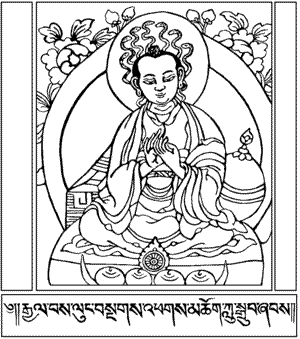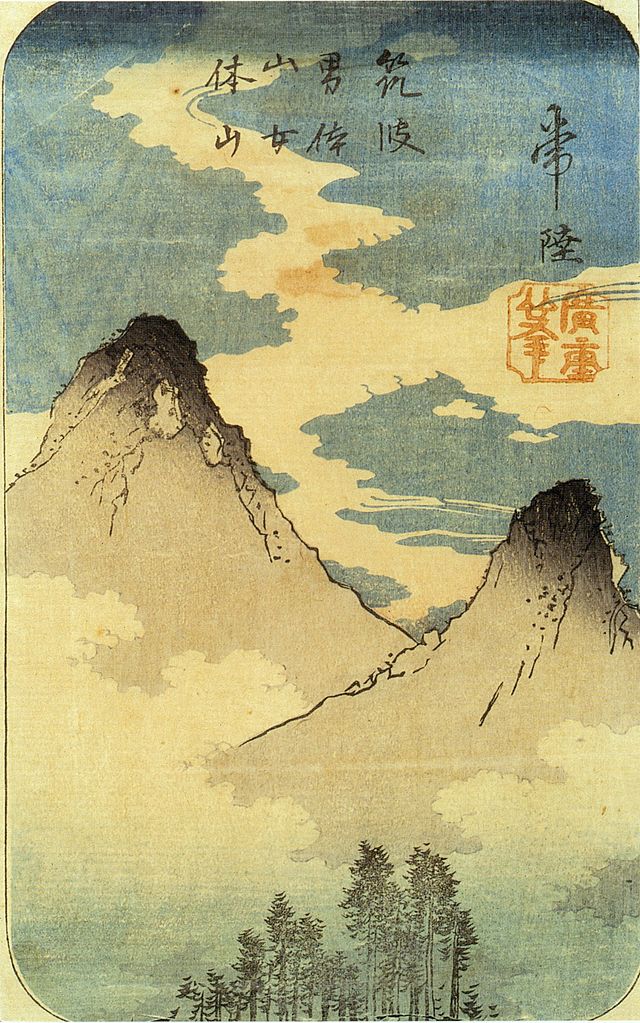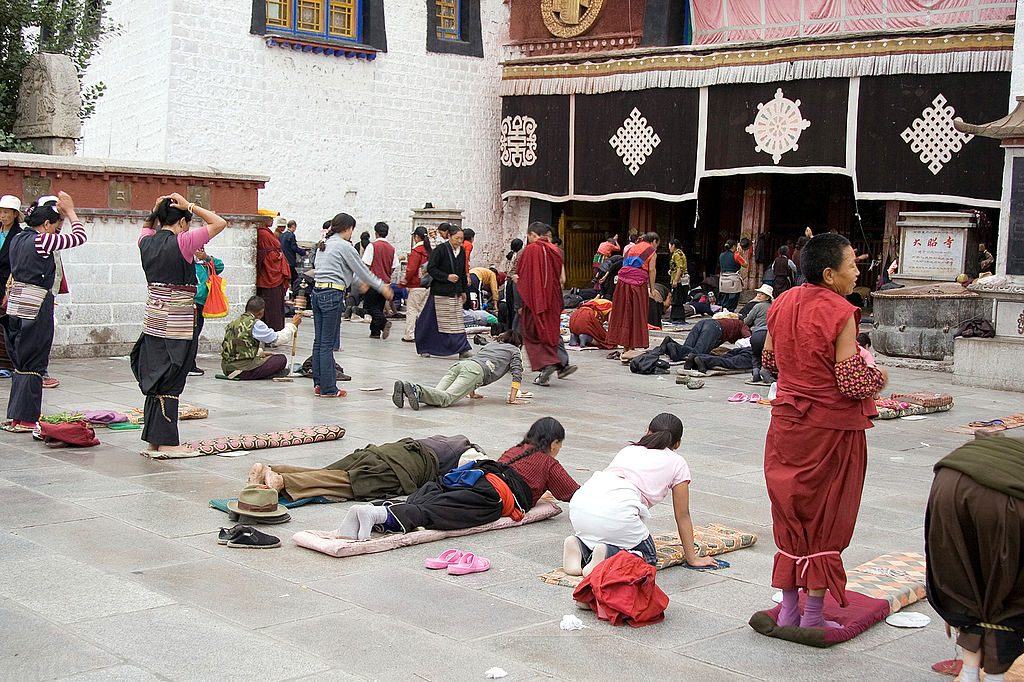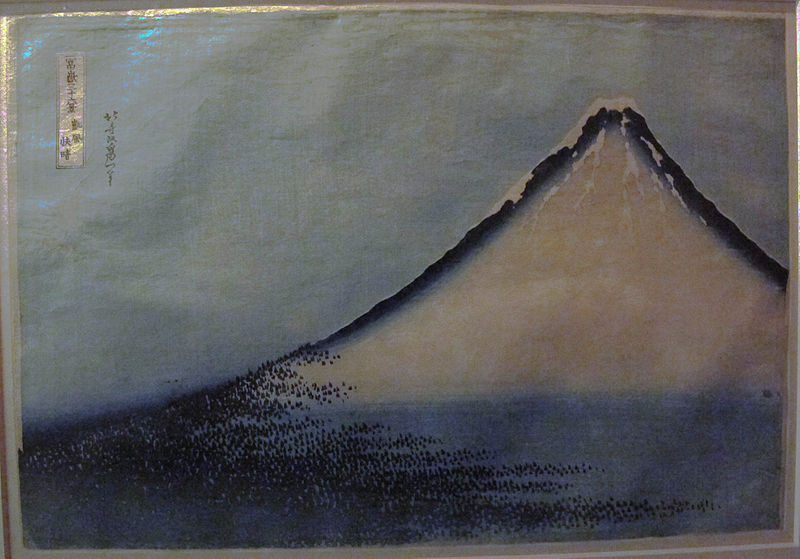Dependent origination is the Middle Way
“It is dependent origination that we call emptiness.
It is a dependent designation and is itself the Middle Path.”
(Nagarjuna, Mūlamadhyamakakārikā)
The Middle Way before Nagarjuna
Referring to the Buddha’s doctrine of dependent origination (pratityasamutpada), which he translates as “conditioned arising,” Peter Harvey writes that it “presents a ‘middle’ way of understanding that echoes the Buddhist path as a ‘middle way’of practice. This idea was to be greatly influential on later forms of Buddhism – such as the Madhyamaka, or “Middle Way” school – all of which sought to best express the true “middle” way of understanding reality.”
Harvey is here alluding to the very first lines of the sermon the Buddha is said to have delivered in Sarnath’s Deer Park soon after his enlightenment. In these lines, the Buddha, who was addressing the five ascetics – who had been his companions during his quest, but had left him when he had interrupted his fast – describes the Middle Way as an avoidance of the extremes of self-indulgence and self-mortification. The widely shared practice of harsh austerities was regarded by the sramanas as the most direct route to the attainment of both supernormal powers and release from the bondage of incarnated life. The Buddha had rejected the practice of self-mortification claiming that it too, just as self-indulgence, was based on attachment, in that case, a pride in one’s achievements. The Eightfold Path was meant to cut off all attachments, attachment as such, said to be the root of suffering.
As Harvey explains, the principle of the avoidance of extremes, which had started out as a practice, led to the elucidation of a middle way of understanding. In the Majjihima Nikaya, purported to be a collection of discourses given by the Buddha, this principle was already associated with co-dependent origination, and defined as avoiding the extremes of eternalism and annihilationism. It was used to explain the transmission of karma from one life to the next, in the absence of a (substantial) “soul” actually leaping from one body to the next (or from one moment to the next, if rebirth is interpreted metaphorically). The process was described as an evolving flux of consciousness spilling over beyond one life and helping spark off another, the metaphor being that of a candle being lit from another. No “being” was said to be either annihilated, or to continue unchanged into eternity. Yet, there was a continuity between one life and the other.
Nagarjuna’s Doctrine of the Two Truths
Perhaps to emphasise that his teaching was but a return to the true teaching of the Buddha, Nagarjuna, emulating the Buddha, placed the Middle Way at the very centre of the philosophical inquiry he set forth in his main work, entitled “Mulamadhyamakakarika (Fundamental Verses on the Middle Way) which gave its name to the Madhyamaka School he founded.
Nagarjuna’s Middle Way was also both a “middle way of practice” and a “middle way of understanding,” and is best explained in his well-known doctrine of the Two Truths: conventional truth (samvrti-satya) and ultimate truth (paramartha-satya). Nagarjuna shows how conventional and ultimate truths do not oppose, but instead, as Paul Williams writes, “mutually imply each other.”
Nagarjuna writes:
“The doctrine of the Buddhas is taught with reference to two truths – conventional truth and ultimate truth.
Those who do not understand the difference between these two truths do not understand the profound essence (tattva) of the doctrine of the Buddha.
Without dependence on everyday practice the ultimate is not taught.
Without resorting to the ultimate nirvana is not attained. If emptiness is coherent then all is coherent. If emptiness is not coherent then likewise all is not coherent.”
(Ch. 24 Mulamadhyamakakarika)

Williams explains that the often painful conventional world, has to be our starting point since it is that which motivates our practice. But it must be accepted “as what it really is – an everyday conventional world. That is, it must be seen correctly as lacking intrinsic existence. The other point Nagarjuna is making is that when the everyday conventional world is thus seen correctly it is apparent that emptiness (the ultimate truth) and the world are not opposed to each other but rather mutually imply each other.” … This being so, Williams adds, “there are not really two actual truths. Really there is only one truth – what is actually true … Emptiness makes the conventional conventional. Conventional and ultimate are hence not separate.”
Given that, as shown in the text on Nagarjuna’s doctrine of emptiness, the superimposition of independent existence is the result of a “cognitive fault,” itself being generated by our highly developed reflective self-centred consciousness, and the attachments it causes us to develop for the “things” reflected in it, only a path of practice, cutting attachments at their roots, can allow us to access the truth of emptiness. This was the goal of the Buddha’s Eightfold Path, based on the Twelve Nidanas (links) of the causal chain leading to entanglement in our erroneous belief in the substantiality of the world. Freedom from attachments allows us to see that “things” are but concepts co-dependently constructed by the mind (reflective consciousness) in the shape of pairs of opposites such as hot and cold, long and short, birth and death, mother and child, etc, with the result that when one of the opposites is brought up, the other opposite is brought up at the same time, as it is really part of the first one. The child makes its mother a mother as much as the mother makes the child!
Further practice then leads us to an actual realisation of this understanding which becomes, as it were, embodied in the sense that we now experience reality in that way without having to deliberately think about it, the way we do not need to remind ourselves that we need to put one foot in front of the other in order to walk. This is how “the ultimate is taught on dependence on everyday practice.” Realisation in the dual sense of understanding by the mind and full appropriation in one’s everyday life is what is referred to as nirvana, the extinction of attachment and suffering.
Three well-known verses by Chinese master Qingyuan Weixin (9th century) put the point in a uniquely vivid way:

Thirty years ago, before I began the study of Zen, I said, ‘Mountains are mountains, waters are waters.’
After I got an insight into the truth of Zen through the instruction of a good master, I said, ‘Mountains are not mountains, waters are not waters.’
But now, having attained the abode of final rest [that is, Awakening], I say, “Mountains are really mountains, waters are really waters.’
In the first line, the novice monk sees the mountains and waters as he was taught as a child, – that is, from the standpoint of ordinary (reflective) consciousness – and believes that these mountains and waters exist independently of himself. In the second line, having been shown by a master that mountains and waters are only concepts projected by the mind onto reality, and having freed himself from attachments through practice, he sees them as empty of independent existence. He would be wrong, however, to believe that there is no-thing, not a single thing out there. Mountains and waters are still there, they still “exist” but as co-dependent with each other and with the mind, not independent from them. In the third line, having attained enlightenment he sees that, because mountains and waters thus arise co-dependently, they share the very nature of emptiness. In the words of Robert Carter, they “are now seen differently because they are 1) freed from old habits of understanding, 2) seen in and for themselves, and 3) lined with the depths of nothingness.”
This is what is meant in the Heart Sutra when it says that “form is emptiness, emptiness is form.”
The Middle Way of practice
Nagarjuna’s Middle Way of practice includes an ethical training comparable to the Buddha’s Eightfold Path, enshrined in precepts, which are designed to free the practitioner from attachments. Since, however, the goal of the practice is now the attainment of Buddhahood in order to liberate others, as pledged in the Bodhisattva Vow, two key set of practices based on cognition and compassion, have been added to the ethical training.
Meditation is obviously still required, at least for the monks, but it would be incorrect to see it as the sort of silent sitting practice Zen practitioners are used to. In fact it has an analytic bent which the Zen practitioners in the West would probably feel uncomfortable with. Williams writes that “there is sometimes a tendency in the West to think of meditation and analysis as in some sense opposed. This is a tendency which should be firmly resisted when studying Madhyamaka, at least as it has been interpreted in India and Tibet.” In Nagarjuna’s Madhyamaka teaching, “analysis, investigation of the way things really are, is an activity forming the principal ingredient of insight meditation (vipasyana), which leads to the different degrees of prajna.” A meditation on emptiness may well start with a debate with an opponent, and formal debating is taught to novices from early on in their training. Systematic analysis alternates with periods of meditative absorption when the attention is strongly focused on an object.
The compassionate dimension is introduced by the Bodhisattva Vow, placing compassion at the very start of the path of practice, turning what had been regarded as a path of renunciation into a more inspiring path of giving. The Buddha, too, had been fired by the wish to find a way out of suffering not just for himself, but primarily to help others. Thus the compassionate heart comes to bring its support to the cognitive mind. If analysis is “combined with the altruistic concern of the Bodhisattva then our meditator attains the first of the ten Bodhisattva stages (bhumi)” (Williams). There is still a long way to go, very precisely nine more stages, which may take two “incalculable aeons,” in other words, a very long time! There was no expectation of a “sudden enlightenment” among early Madhyamaka philosophers. The path was a long and patient cultivation.

Lay practice was less ambitious, and based on puja-like rituals where the shorter versions of the Prajnaparamita sutras were recited or chanted, mantras repeated, prostrations and visualisations performed. Debates on the nature of emptiness were often absent. The seemingly endless repetitions of scriptures and mantras was used to, as it were, imprint the teachings on emptiness in the practitioner’s psyche.
What is referred to as “skillful means” (upaya) is another practice associated with Madhyamaka, although it may go back to the Buddha who had taught that the method of teaching had to be adapted to the student. “Skillful means” have been described as expedient methods used by masters to trigger insights in their students. Methods used in the “crazy wisdom” Tibetan tradition or in the beatings and otherwise rough interactions between some Zen masters and their disciples, fall into the category of skillful means.
The Middle Way in everyday life
The middle way of practice said to open the minds and hearts of the practitioners to the middle way of understanding, and therefore ultimate truth, obviously include our everyday lives. How are we to translate the principle of the mutual dependence of the conventional and the ultimate truth into our engagement with issues arising at every turn and demanding attention? Here, the emphasis on emptiness, set forth by the Buddha’s teachings, and squarely set centre stage by Nagarjuna’s explicit focus on sunyata (a term which hardly existed before him) has given rise to much misunderstanding. No matter how often teachers have repeated that “emptiness” does not mean that “nothing exists at all on any level,” a subconscious feeling continues to remain that things, as we see them, are not really real, and this has resulted in the reluctance among too many Buddhists to engage with the issues facing humankind.
How, then, should we live our lives to avoid falling in the trap of such nihilism? Williams says that the accomplished bodhisattva “no longer even sees intrinsic existence but sees emptiness in the very same perceptual act as he sees objects.” If living according to the truth is living from the standpoint of emptiness, our everyday lives in in the midst of “things” – in other words, “empty forms” – are precisely the place where we encounter emptiness. The ability to see forms as “the forms of the formless” is what Carter, in his study of Nishida Kitaro, calls the “double aperture.” Using a metaphor Nishida often used, he writes: “Nothingness is the lining of the kimono, known only by the very way in which the kimono hangs, and holds its shape. One sees the lining by not seeing it, but by reading its nature from the hang of the formed kimono. This is the form of formless. The double aperture consists in the ability to read the nature of the lining from the shape or hang of the kimono; one reads the nature of the formless from the formed.”
Sources
Peter Harvey – An Introduction to Buddhism: Teachings, History and Practice (2013)
Paul Williams – Mahayana Buddhism: The Doctrinal Foundations 2nd edition (2009)
Robert E. Carter – The Nothingness Beyond God (a study of Nishida Kitaro’s philosophy – 1997)
Anyone wishing to go deeper into a reformulation of Buddhist thought into the language of Western philosophy may be be interested in my other blog, dedicated to Nishida Kitaro, Nishitani Keiji and Ueda Shizuteru – https://thekyotoschoolofphilosophy.wordpress.com

